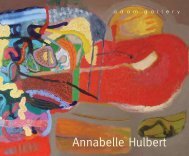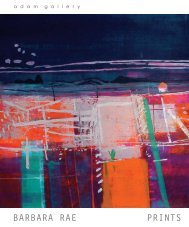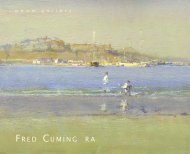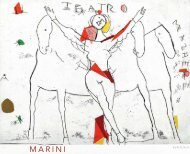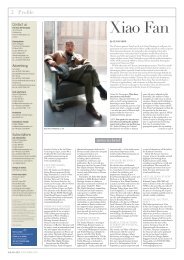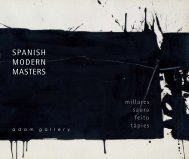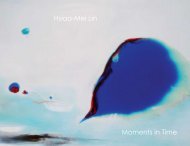Create successful ePaper yourself
Turn your PDF publications into a flip-book with our unique Google optimized e-Paper software.
<strong>Eduardo</strong> <strong>Chillida</strong> (1924-2002) is a major figure in twentieth century art. During his lifetime he exhibited widely in museums in European<br />
cities including the Hayward <strong>Gallery</strong>, London, the Reina Sofía Museum, Madrid as well as the Guggenheim Museums in Bilbao and New York<br />
and the National <strong>Gallery</strong>, Washington DC. His work is now held in the collections of museums such as Tate <strong>Gallery</strong>, London, the Metropolitan<br />
Museum, New York and the Art Institute of Chicago. Numerous sculptures commissioned for public places can be seen internationally,<br />
such as his monument to German reunification near the Chancellery in Berlin, or the Combs of the Wind (Peines del Viento), 1977, on the<br />
shoreline of San Sebastián bay. <strong>Chillida</strong> was rooted in his homeland, the Basque region of Spain and San Sebastián was his hometown.<br />
<strong>Chillida</strong> began working in lithography, etchings, silkscreen and woodcuts in 1950, and printmaking remained an important part of his artistic<br />
output from that date onwards. <strong>Chillida</strong>’s graphic work, like his sculpture, shows a preoccupation with form, space and framing. Martin van<br />
der Koelen has described <strong>Chillida</strong>’s main concern as “the concept of space and its determinedness by formed matter, the relation between<br />
emptiness, volume and their mutual limits”. Absence is therefore as important as presence. The balance of dualities in his work such as<br />
black-white, heaviness-lightness and emptiness-fullness give <strong>Chillida</strong>’s work a universal importance.<br />
<strong>Chillida</strong> worked mainly with etching, embracing the full materiality of the technique. Instead of the basic rectangular plate, he often cut the<br />
etched plate into a shape leaving the shaped plate mark when pressed: the embossment becomes part of the composition. From the 1980s,<br />
<strong>Chillida</strong> used embossing or relief, to give a more pronounced third dimension to his graphic works.<br />
<strong>Chillida</strong> represented Spain in two Venice Biennales where he was awarded the International Grand Prize for Sculpture (1958) and the<br />
Kandinsky award (1960). He received many major international awards for his work, including the Gold Medal of Fine Arts, Madrid (1981),<br />
the Great Prize of the Arts of France (1984), and the Imperial Prize of Japan (1991). He was elected an honorary Royal Academician, London<br />
(1983) and a member of the Academy of Boston and New York, USA (1995).<br />
Paris<br />
Serigraph on two layers of paper 1995<br />
Signed in pencil and inscribed (edition 50)<br />
Plate: 19.2 x 21.1 cm - Sheet: 60 x 56.5 cm<br />
Van der Koelen 95008.<br />
Published by Galerie Lelong, Paris.




